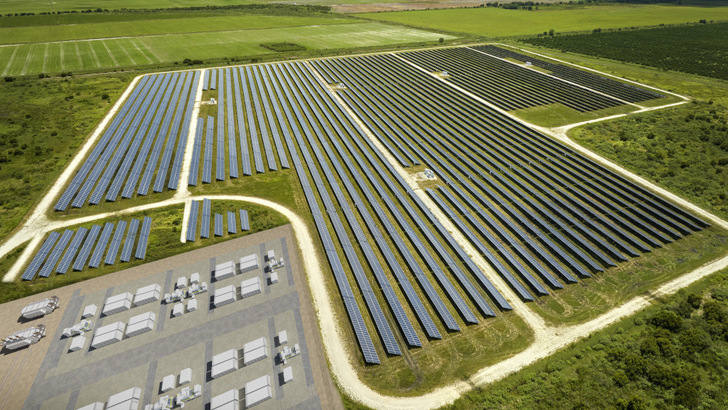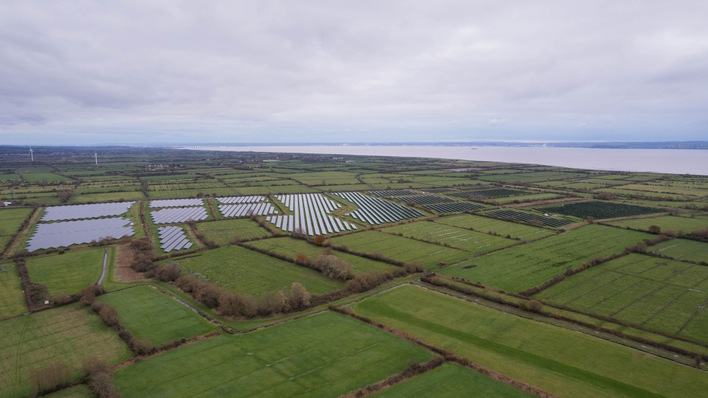Grid connections remain the main bottleneck for large‑scale battery‑storage projects. This is one reason co‑location, which pairs batteries with solar and wind farms at shared grid points, is rapidly gaining ground. Developers are looking for storage designs that are versatile, future‑proof and able to tap multiple revenue streams.
At the investors’ summit hosted by the German Energy Storage Association (BVES) in Berlin, Alexander Antonyuk of the European Investment Bank (EIB) emphasised the central role of battery storage in creating a stable, resilient and financially sustainable energy system. Grid expansion remains costly and is lagging far behind the growth of renewable generation capacity, leading to billions in redispatch costs as operators intervene to stabilise the network.
PPA price gap stifles renewable project deals
The increasing number of hours with negative electricity prices driven by temporary oversupply from solar and wind generation is also disrupting the economics of renewable energy projects. Battery storage can help close this gap by balancing the weather‑dependent output of wind and solar plants with actual electricity demand from households, industry and commerce.
Rising demand for flexibility
The EU estimates that flexibility needs in the European power grid will reach 360 GWh by 2030, while industry association SolarPower Europe puts the figure as high as 780 GWh. Alongside smart management of electricity consumers such as electric vehicles and heat pumps, industrial demand‑side measures and dynamic tariffs, this rising demand will be met through pumped‑storage, electrolysers and large‑scale battery systems. These can store surplus electricity for several hours and balance short‑term grid fluctuations within milliseconds.
Kristian Ruby: “We must accelerate electrification in all sectors”
As the energy transition advances, demand for and deployment of battery storage systems are rising rapidly across Europe. SolarPower Europe expects the market to grow by 36 percent in 2025 (compared with 2024) to 29.7 GWh, reaching 118 GWh by 2029 – or up to 183 GWh in an optimistic scenario. Large‑scale systems are expected to dominate, with a market share of 55 percent in 2025 and 69 percent in 2029. Germany, Italy and the United Kingdom remain the leading markets.
Sharp cost decline – multiple business models
One of the main drivers behind the boom in large‑scale battery storage is the sharp fall in costs. Prices for lithium‑ion batteries, the dominant technology, have dropped by more than 75 percent since 2010. In addition, many European countries have introduced policy incentives. In Germany, for example, storage systems connected to the grid by the end of 2028 are exempt from grid charges, with some levies reduced or abolished entirely.
Navigating hurdles in large-scale battery project finance
Operators can generate revenue by capitalising on price fluctuations in the spot market (day‑ahead and intraday trading) or by providing grid‑stability services such as balancing power. They can also boost income by optimising self‑consumption and selling surplus PV electricity directly to the market.
“Perfect storm” for energy storage
Volker Hild of Siemens Energy described the current environment as a “perfect storm” for energy storage. In Germany, new large‑scale projects are being announced almost daily. On 29 October, RWE CEO Markus Krebber and Bavarian Minister President Markus Söder broke ground on a 400 MW / 700 MWh battery facility in Gundremmingen. The project will use the existing grid connection of the nuclear power plant now being decommissioned. This represents an investment of €230 million, with commissioning planned for 2028.
At other decommissioned nuclear and coal power plant sites, such as Philippsburg in the Federal State of Baden‑Württemberg, operators are also using existing grid infrastructure for new battery‑storage projects. “Unlimited grid access is the new gold,” said Michael Miller of EnBW at the BVES Summit.
Bubble in grid connection requests
Grid‑connection applications for battery‑storage projects in Germany have now exceeded 500 GW – many times the country’s peak load. This highlights weaknesses in the current connection framework. Under the “first come, first served” principle, applicants can reserve grid capacity regardless of project viability. Limited pre‑assessment has encouraged speculative applications that tie up capacity and delay serious developments.
Dutch grid resilience offers lessons for Europe
Grid operators face a significant administrative burden, as many registered projects are unlikely ever to be built. As a result, approval procedures are taking longer and legal uncertainty is rising.
“We currently have a very attractive market for battery investment in Germany, but grid access remains the biggest hurdle,” said Stephan Lehrke, Managing Director of Second Foundation Germany. The Czech‑headquartered tech company builds, operates and trades large‑scale battery systems and is among some 40 officially registered balancing‑service providers in Germany. Lehrke estimates that grid‑connection requests for storage are around ten times higher than the available capacity.
Improving grid access
Jaroslav Macek, CEO of Amsterdam‑based Elevion Group, cited Germany’s highly fragmented landscape of distribution system operators as a major cause of the grid‑connection bottleneck. “In some cases, we don’t get a response to our requests for an entire year,” he said.
How Italy is advancing the solar energy transition
Macek sees the solution in greater standardisation, transparency and digitalisation of the process. He advocates establishing a central digital grid‑connection platform to provide an overview of available capacity, ongoing procedures and clear requirements for applicants.
Co-location and multi-use strategies
To make better use of available grid‑connection points, both Lehrke and Macek are increasingly pursuing combined solar‑plus‑storage projects. BVES President Thomas Speidel also noted the rising importance of such co‑location solutions compared with stand‑alone systems.
BayWa r.e.: “Co-located storage is a more complex challenge”
Another key message from the summit was that battery‑storage systems must be designed for multiple applications – from electricity trading and grid services such as black‑start capability and inertia provision to self‑consumption optimisation in industry and commerce. This approach, Hild said, improves readiness for future market developments. He also cited the combination of battery storage with synchronous generators, STATCOMs or gas turbines as a promising business opportunity for the years ahead. (hcn)









